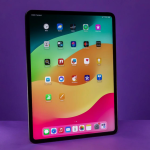Elyssa Goodman for Insider
- At Takes the Cake, drag artists who identify anywhere on the gender spectrum are welcome.
- The event is put on by The Cake Boys collective.
- See more stories on Insider’s business page.
“I put the ‘toxic’ in toxic masculinity!”
Muscles Monty is standing on stage at Purgatory, a club in Bushwick, Brooklyn. Bathed in purple and green light, faux spiders appear to be crawling on his jacket, which is oozing neon-green slime. His face is twisted, in gruesome makeup made to look as if skin is peeling off – as if he has just fallen into a barrel of toxic waste. That is, in fact, the precise look he’s going for.
It is the first night of Takes the Cake, a “drag king and thing” competition. There will be competitions on four consecutive Fridays, culminating in a grand finale on September 26 at Brooklyn’s 3 Dollar Bill, a larger venue. Performers who identify anywhere on the gender spectrum are welcome.
Muscles Monty, the emcee, is part of a four-person collective called the Cake Boys, the event’s host. Muscles and two others – Richard and Sweaty Eddie – are trans-identifying drag performers, while the fourth member, Senerio, identifies as queer.
Elyssa Goodman for Insider
New York has long been at the center of the drag scene, but drag queens have been dominant. The Cake Boys are dedicated to creating a space for drag kings, trans and nonbinary performers, and queer artists who weren’t getting booked as often as their drag-queen counterparts. That’s what Takes the Cake is all about.
Muscles Monty had expected a handful of people to show interest in the event. Instead, 40 performers signed up, most of whom were new to drag, and tickets quickly sold out.
“I’ve been watching local drag, supporting local drag, throwing dollars at local drag for years, and I saw the Cake Boys and … truly I’ve never seen a drag collective that’s focused on drag kings and things,” says Smol Papi, the runner-up from Takes the Cake’s first week.
As Willy Killigan, who won Takes the Cake’s second week, puts it, “it really just goes to show you that people have been thirsty for this kind of space, and it’s amazing to be a part of it.”
Elyssa Goodman for Insider
The goal of the event is to “give respect to the alternative performers that may not have previously felt like they’ve been respected in these spaces” and “want to prove that we’re just as good as the rest,” says Richard, the drag king who cofounded the Cake Boys in 2019.
Richard first saw drag kings in the 2002 documentary “Venus Boyz,” which showcased New York’s masculine drag artists like Mo B. Dick and Dred. He started performing at a Brooklyn pageant called Mx. Nobody, which was more about cultivating space for alternative drag than about cutthroat competition.
At Takes the Cake, Richard is introduced as the “cishet of your nightmares,” in a mullet and glasses. He strips out of a tracksuit and rhinestoned sneakers to take as his lover a cherry pie.
Elyssa Goodman
“Queer money in circulation”
Underneath Purgatory’s glittering disco ball, Takes the Cake comes to life.
Klondyke cuts open a plastic sheet and sloshes themselves through a bucket of ooze to the throb of the experimental emo rockers Brave Little Abacus.
Tuna Melt devises a rap with a message that “queer money is power and it stays with us,” throwing 65 dollar bills inscribed with “Queer Money in Circulation” into the crowd.
Lucky Pierre becomes a sexy version of The Penguin from “Batman,” sliding his tongue across his umbrella. Black liquid drips from his mouth.
Bucket is a tattooed janitor salaciously splashing the crowd with his mop.
For the musical interlude, Sweaty Eddie lip-syncs a mashup of Frank Sinatra’s “I’ve Got You Under My Skin” and the “Silence of the Lambs” serial killer Buffalo Bill’s dialogue (“It puts the lotion on the skin”).
“Me, personally, I can say for sure that I’m interested in bringing delightful chaos and conflictingly evocative experiences,” he says.
Elyssa Goodman for Insider
Judges – established New York “kings and things” – offer friendly, affirming input on performers’ CAQUE (pronounced either “cake” or “cock,” however you prefer): concept, artistry, quality, uniqueness, and execution.
Each evening, the top four contestants participate in a wacky lip-sync roulette – it might be “Seinfeld’s” wordless theme song, or Mariah Carey’s “All I Want for Christmas Is You.” Two winners are chosen each week. Those eight performers and four wild cards will go on to the grand finale, where the Takes the Cake winner will be crowned.
“I’m seeing art!” someone in the crowd shouted during the final night of competition before the finale.
Even as drag has gone mainstream, helped along by the massive popularity of “RuPaul’s Drag Race,” there is clearly an appetite for up-and-coming “kings and things” to find their voices and perform with a DIY ethos. While “Drag Race’s” influence on the art is undeniable, thrusting drag into the mainstream in ways perhaps previously thought impossible, it has also perpetuated the phenomenon of mainstream drag, the high-femme drag of popular culture.
But as “Drag Race’s” own Trixie Mattel once said, saying you love drag but watch only “Drag Race” is “like saying you love music” but “you only watch American Idol.”
This is the idea that the Cake Boys and many others are fighting for at venues like this one. “I just feel like we’re pulling away and creating a new narrative of what drag can be,” Muscles Monty says.
Elyssa Goodman for Insider
Elyssa Goodman for Insider
Elyssa Goodman for Insider
Masculine and gender-nonconforming drag is as old as the theater itself. There was Vesta Tilley, the beloved star of the 19th-century British stage, and Florence Hines, the star of the 19th-century American stage. Japan’s famed Takarazuka Revue celebrates its centennial this year.
The 1930s were rife with drag kings like Blackie Dennis and Buddy Kent, who crooned and stripped and made names for themselves in nightlife. The icon Stormé DeLarverie preferred the term “male impersonator” and performed with the touring drag troupe the Jewel Box Revue from 1955 to 1969, later becoming a Stonewall veteran. The Cockettes employed genderfuckery and glitter in large doses across both the gender spectrum and the US coasts.
In the 1990s, drag kings saw another wave of popularity with the legendary Club Casanova parties and revues assembled by Mo B. Dick, featuring performances by the iconic Dred and Murray Hill, among others. Their lineage includes Dr. Wang Newton, who has performed internationally as a drag king since 2004; Landon Cider, who won the most recent season of the drag horror competition “Dragula”; K. James of Brooklyn’s Switch n’ Play drag troupe; Tenderoni, a king who won the most recent Drag Queen of the Year competition; the beloved Chicago king Majic Dyke; and so many others.
Elyssa Goodman for Insider
Elyssa Goodman for Insider
Elyssa Goodman for Insider
Elyssa Goodman for Insider
At events like Takes the Cake, there’s space to create whatever comes next for drag. It’s become a haven for performers who had been seeking avenues for the drag they wanted to do.
“They saw a niche that was missing,” says Mo B. Dick, who has also been a mentor for the Cake Boys and cofounded the website Drag King History. “They said, ‘Wait a minute, where are the drag kings in New York City? There used to be a thriving drag-king scene – we need to bring that back.’ So they are a direct lineage of the New York drag-king scene.”
Elyssa Goodman for Insider
Elyssa Goodman
Performers are unlimited in who they can be and how they express themselves, Senerio says.
“It could literally be a fucking mythical creature as long as it’s like, Oh my God, like, bitch, you work, you came here to let the girls know, like, hey, this is who I am, and fucking eat it,” Senerio says.
And really, if the Cake Boys know how to do anything, it’s how to make them all eat it.
Powered by WPeMatico






